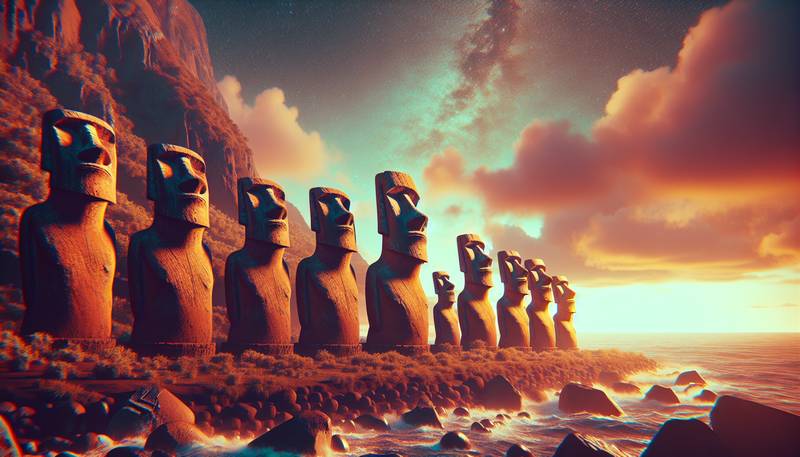Remote Wonders of Easter Island, Chile: Moai Statues

Unveiling the Mystery of Moai StatuesNestled in the middle of the Pacific Ocean, Easter Island is like that friend who decides to hold a secret party and invites no one. With its iconic Moai statues standing tall like they’re auditioning for a “Top Model” runway, this isolated paradise has a history as intriguing as a mystery novel. These monolithic figures, some reaching heights of over 30 feet, were created by the Rapa Nui people between 1400 and 1650 AD. If only they could talk, they’d have tales that would overshadow most soap operas.A Quick History Lesson That Won't Put You to SleepThe Moai statues were carved from volcanic tuff and were originally intended to honor ancestral figures. The Rapa Nui believed that these statues symbolized the spirits of their ancestors—kind of like a long-distance family photo, but with fewer awkward smiles. These statues represented important chieftains and were strategically placed to oversee the villages, offering a watchful presence and a reminder not to steal the neighbor’s Wi-Fi.As the population grew, the islanders faced challenges, including resource depletion. One might say they were the original “too many cooks in the kitchen” scenario, but with a few less burnt cookies. The island's lush forests disappeared, and with it, the capacity to transport these colossal statues. The irony here is rich: the very statues meant to elevate their status might’ve also contributed to their downfall, much like an Instagram influencer with one too many selfies.Architectural Marvels or Giant Doorstops?These statues are more than mere large rocks with a penchant for existential contemplation. Each Moai was painstakingly carved and transported across the island. It’s believed that they were moved using a combination of manpower, ropes, and a lot of ambition. Imagine a bunch of ancient Rapa Nui people shouting “Heave!” and “Ho!” while simultaneously trying not to trip on their own feet. It’s a wonder how no one ended up with a Moai-shaped bruise.The engineering skills required for transporting these heavyweight champions were advanced for their time. Some theories suggest they rocked back and forth during transit while others claim they were walked upright. Either way, it sounds like a workout regimen that would put today’s fitness influencers to shame. The Purpose Behind the Giant HeadsWhy did the Rapa Nui people invest so much time and energy into these towering figures? Was it a way to impress future generations? A solution to keep pigeons at bay? Or perhaps a failed attempt at creating the world's largest set of garden gnomes? The truth, as it often is, is a bit more solemn. The Moai served to honor ancestors and connect the living with their heritage, creating a sense of community and identity that is all too vital, especially when you live in such an isolated location. The Moai also played a vital role in the social and political structure of the society. The size of a statue often indicated the status of the individual it represented. So let’s just say the local celebrity Moai was probably not the one you wanted to challenge to a high-stakes staring contest.Modern-Day Moai and Preservation EffortsToday, the Moai statues stand as cultural symbols and UNESCO World Heritage Sites, attracting tourists who wish to get their Instagram game on point with a backdrop of ancient stone. Local efforts are underway to preserve these structures, but it’s a tough job. With the effects of climate change and the influx of visitors hoping to nab the perfect selfie, the Moai need all the care they can get—much like a delicate soufflé that looks fabulous but falls at the slightest poke.Preservation isn’t just about shoring up the statues; it also involves educating visitors about the cultural significance of the Rapa Nui people. Local communities are stepping in with cultural tours, ensuring that history doesn’t get drowned out by the click of camera shutters.Final Thoughts: Rocking the History BoatEaster Island's Moai statues are not just impressive remnants of a bygone era; they are a testament to human ambition, creativity, and, dare it be said, the occasional hilariously monumental mismanagement of resources. The Rapa Nui people may have faced many challenges, but they’ve left behind a legacy that continues to capture the imagination of many. For those looking to untangle the rich history of these stone giants, remember—it's less “what would they do” and more “what could they say,” if only they had a voice (and maybe a podcast deal).
|
|







